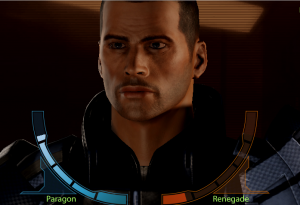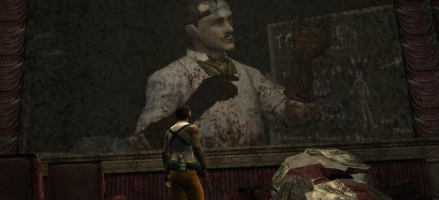For this small series, I want to look at game series that for one reason or another scored a hit with the first game, and then unfortunately fizzled out with the next. Normally we see series grow and improve with subsequent games such as the Assassin’s Creed series or a later game refines the design and fixes the problems such as Shogun 2 Total War.
But the games we’re going to talk about were successful or just successful enough to warrant a sequel which unfortunately did not score as well as the original and ended the series. To begin with, we have one of my favorite flawed gems: The over the top third person shooter The Suffering.
The Death Penalty:
The Suffering came out during that time where morality sliders and good/evil choices were all the rage among developers and it definitely took advantage of that.
You played as Torque, a man convicted for supposedly killing his wife and son and sentenced to one of the worse prisons in the world. On the night of his arrival, Torque is caught in an attack by supernatural forces that free him and he’s forced to fight his way out of the prison and hopefully escape.
Torque was a silent protagonist and the game’s morality was used to determine how people saw him and if he was truly guilty or innocent in his family’s murder. Helping people out would score him good points while killing everyone he sees will give evil points. Based on Torque’s morality, different scenes would change and the game’s ending would be affected.
The Suffering played out as traditional third person shooter with one exception. Torque had the ability to essentially “Hulk out” and transform into a beast when things got too tough. The explanation for his ability played into the story and one of the side characters in the plot.
One area where The Suffering stood out was in the enemy designs. Every creature the player fought in the game was based on a form of execution. One monster represented being shanked by having shivs for hands and feet, while a firing squad was represented by a massive monster that was blindfolded with guns sticking out of its back.
The gun play was alright but it was the game’s ability to walk the line between horror and action that earned it points in my book. The player was generally left alone in dark places with these creatures which added tension, but the as mentioned hulk ability and the bevy of guns gave the player power. The Suffering proved to be a winner and got a sequel, but for everything the first game did right, The Suffering 2 did wrong.
Locked Up:
The Suffering 2 ret conned the original’s plot by coming out and saying that Torque did not kill his family, but a crazed murderer did. Taking place in Baltimore, the player for some reason would still fight the same enemies from the first game despite not taking place in a prison.
This time around the developers made it so that the morality would affect Torque’s ability when he transforms and created armored versions of the enemies that could only be killed in monster form. These enemies and the increased fighting made The Suffering 2 a lot harder than the first game.

The sequel added in a lot more firepower and fighting but downplayed the horror aspect of the first.
The game culminated in one of the hardest final bosses seen in a game. The final boss constantly spawned armored enemies and could only be hurt while Torque was in monster form.
However the boss had the ability to instantly knock Torque out of it, forcing the player to refill their meter while beating down enemies who were free to attack him at both ranged and melee.
The changes to the story and setting also hurt the plot as the developers introduced foundations, military groups and grand secrets about Torque that just so happened to have influenced everything that went on in the series. The Suffering series was a strong example of why morality choices really hurt games that are turned into series from a narrative point of view.
Good, Bad and the Neutral:
When you have three different states of good, evil and neutral and then have to write three different endings. How are you supposed to write the next game without annoying people who played through the first? You either say that one ending was “the true ending or you start the story out at a point where everything that happened before no longer matters. Neither of those options led to strong storytelling.

Morality bars and sliders were a popular feature last generation, but they tend to cause problems with trying to tell a cohesive story.
This is what the Mass Effect series did so right with player influenced choices carrying through.
The player’s actions at key events (which were influenced to some extent by their morality) determined how the story played out. So the story events weren’t based on if the player was +5 good here or +10 evil there, but how the player reacted at major points that then shifted the story in a new direction.
It’s also important to mention that Bioware from the start wanted to turn Mass Effect into a trilogy, unlike most games that get sequels just because the publisher wanted to make more money. The Suffering like other horror games suffered (no pun intended) from the sequel curse. The best horror franchises are one-offs, lest you run the risk of the audience acclimating to the same situations.
Up next we have another favorite of mine where the sequel actually improved on gameplay but fell through on sustaining the series.


